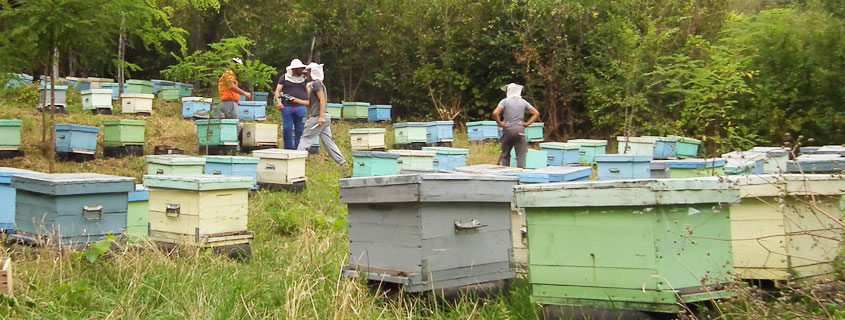This post is also available in: Spanish
After we previously talked about the different races of honey bees and how to choose one that best suits your needs, we are going to address in this article another important aspect about working in the apiary: choosing an optimal location.
When selecting a site for your apiary, you have to take into account two major factors: southern exposition and an excellent isolation against wind. These two are by far the most important conditions that a potential apiary site must fulfill. We won’t go into more details about the two as they are well known subjects to most beekeepers. We will make however an important note: the isolation against winds, be it naturally or man made, must not obstruct the circulation of air current. Otherwise, the humidity will rise to a high level and this can only be detrimental to a colony of bees. The simplest way to avoid this would be to only close the apiary location on three sides and leave one unobstructed (usually the one facing South).
We will however go into more details about a crucial aspect that’s often being neglected: positioning the hives in the apiary. The way that the hives are individually positioned has a major impact on the welfare of the colony, as well as the productivity of the hive. Without having a clear reason why, lots of beekeepers position their hives in long rows, with the bee entrance facing the same direction. We’ll be the first to admit that we used to do the same mistake until we found out the major drawbacks of this type of positioning.
When there aren’t enough elements to differentiate one hive from another a honey be won’t recognize its own hive. Therefore, they could and will go in another hive. During harvesting, most of them will be welcomed by the foreign colony, but in other circumstances they will be attacked and killed. Either way, the consequences are negative: in the first situation, during harvest, there will be an overpopulation of bees for some colonies, while other will be losing population. Therefore, comparing the honey yield of different hives won’t be relevant. Even in the case of overpopulated colonies, usually the ones at the end of the rows, the imbalance caused by the incoming bees from another colony will prevent that hive from achieving its maximum yield. Moreover, a be entering a foreign hive is a major source of disease spreading. In the second situation, when there isn’t nectar flow, a poor positioning of the hives will promote robbing. Even though there are differences between the races of honey bees, all of them are inclined to robbing. It’s in the bee’s nature. And even though a colony won’t be killed, robbing is the cause for the death of many queen bees, especially young ones, that become very nervous and are often killed by their own colony.
There are a few way to prevent and reduce the above mentioned situations, even though you can not completely prevent them from happening. On of the most effective solutions is to position the hives in groups of four, each of them having the bee entrance facing a different direction. Traditionally, one would position all the hives with the bee entrance facing South-East or South, but from our experience this has absolutely no influence on the productivity and honey yield.
Moreover, you have another advantage from positioning the hives like in the images above: while you’re working on one hive, you can use the one next to it as a support or working table to place the cover or your tools. If there is a slope in the ground and you can’t position four hives in one group, you can still group two of them complying to the same rule: bee entrances facing different directions.
Lastly, we will refer to the number of hives that you should place in one location: in case of strong colonies and in order to have a maximum productivity during harvest, the number of hives should be no more than 40. This is also in tune with the rule stating that in the case of honey yield the most important is a steady yield per colony and not just one or two exceptions.







Leave a Reply